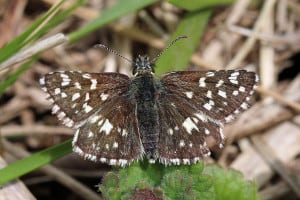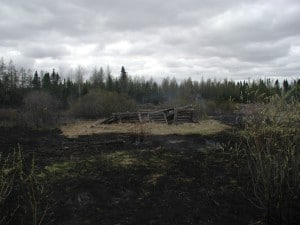The week of June 15 – 21 is National Pollinator Week, proclaimed by the U.S. Secretary of Agriculture. Pollinating animals, including bees, birds, butterflies, bats, beetles and others, are vital to our delicate ecosystem, supporting terrestrial wildlife, providing healthy watershed, and more.

In a clearing in the woods of northern Minnesota, some delicate butterflies have found their dream home. Carefully managed to provide the specialized habitat required by several species, the McNair Butterfly Area hosts about 50 species of butterflies, “nearly every butterfly, common or rare, found in northeastern Minnesota.”
Located about 20 miles north of Two Harbors, the 15-acre site has been kept mostly free of trees through years of prescribed fire and selective cutting by the U.S. Forest Service and the Minnesota Department of Natural Resources.
This management has paid off. Today, the site is home to the Nabokov’s blue, designated by the state as a species of “special concern.” After emerging in early summer, the adult butterflies only live about a week, just enough time to mate and lay the next generation of eggs, according to the DNR. Those eggs must be laid on the dwarf bilberry plant, which is found in only a few places in northern Minnesota besides the McNair site.
Another butterfly found at the site, the grizzled skipper, has not been found anywhere else in the state.

The McNair Site was acquired by The Nature Conservancy in 1986 and transferred to the Superior National Forest in 1991. While it had been an open meadow full of nectar-producing plants, including dwarf bilberry, the area was being overrun by trees and shrubs. After researchers from the University of North Dakota recommended preserving and restoring it as butterfly habitat, managers began an effort to get rid of the trees and brush using both cutting and fire.
That culling is key to keeping it open, but must be done carefully. Only small parts of the site are burned at one time because, while the burning is good for the dwarf bilberry and other plants that host butterfly larvae, burning the whole unit at once could kill the insects.
The meadow has now been restored to its historic size, with efforts underway to see if even more habitat for the Nabokov’s blue butterfly can be provided. According to the Forest Service, crews have cleared the understory under widely-spaced trees adjacent to the site to determine if the butterfly will use that type of habitat.
In mid-July, researchers will do an annual assessment of the Nabokov’s blue and dwarf bilberry population at the site during its brief lifespan. More dwarf bilberry has been found nearby and several small sites may offer potential for additional habitat for Nabokov’s blue.

